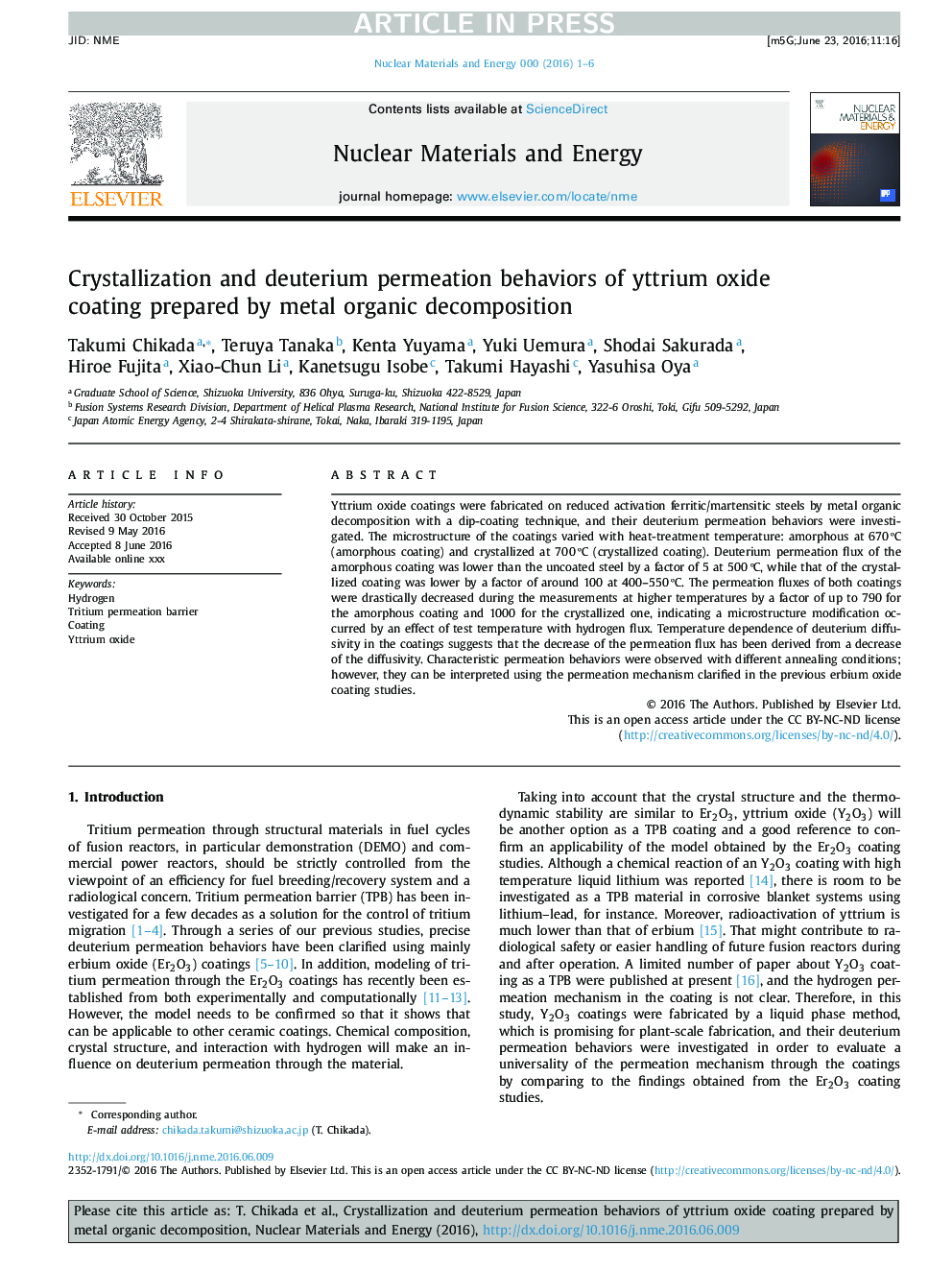| Article ID | Journal | Published Year | Pages | File Type |
|---|---|---|---|---|
| 7987672 | Nuclear Materials and Energy | 2016 | 6 Pages |
Abstract
Yttrium oxide coatings were fabricated on reduced activation ferritic/martensitic steels by metal organic decomposition with a dip-coating technique, and their deuterium permeation behaviors were investigated. The microstructure of the coatings varied with heat-treatment temperature: amorphous at 670 ºC (amorphous coating) and crystallized at 700 ºC (crystallized coating). Deuterium permeation flux of the amorphous coating was lower than the uncoated steel by a factor of 5 at 500 ºC, while that of the crystallized coating was lower by a factor of around 100 at 400â550 ºC. The permeation fluxes of both coatings were drastically decreased during the measurements at higher temperatures by a factor of up to 790 for the amorphous coating and 1000 for the crystallized one, indicating a microstructure modification occurred by an effect of test temperature with hydrogen flux. Temperature dependence of deuterium diffusivity in the coatings suggests that the decrease of the permeation flux has been derived from a decrease of the diffusivity. Characteristic permeation behaviors were observed with different annealing conditions; however, they can be interpreted using the permeation mechanism clarified in the previous erbium oxide coating studies.
Related Topics
Physical Sciences and Engineering
Energy
Nuclear Energy and Engineering
Authors
Takumi Chikada, Teruya Tanaka, Kenta Yuyama, Yuki Uemura, Shodai Sakurada, Hiroe Fujita, Xiao-Chun Li, Kanetsugu Isobe, Takumi Hayashi, Yasuhisa Oya,
